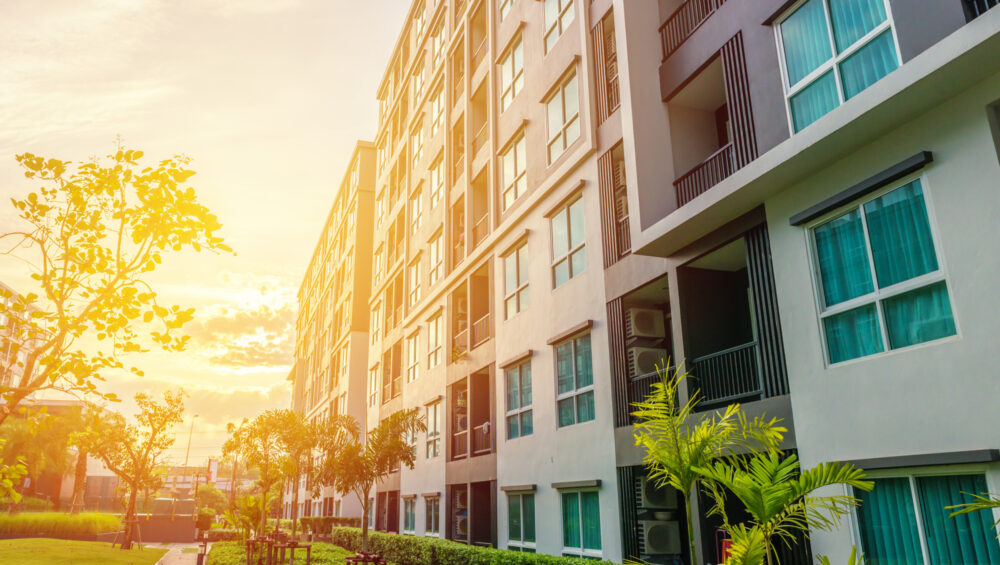According to the latest research from the Pew Charitable Trusts, despite new construction, rents across the USA remain high. That’s good news for investors wanting to add to the pool of available housing while earning some passive income.
When you’re considering buying real estate properties, working on apartment rentals comparisons, or searching for accommodation, it’s vital to know more about the different types of apartments available before you make a decision.
Keep reading to find out more about the most common kinds of apartments you’re likely to encounter in your search.
Studio Apartments
A traditional studio apartment layout usually consists of about 600 square feet of open-plan space. They usually have a full kitchen and a separate bathroom.
An efficiency apartment is a studio apartment with a small kitchen and minimal appliances, like a mini refrigerator, small sink, and microwave or small cooktop.
There are also three other types of studio apartments:
Alcove Studio
An alcove studio has a small area extending from the main living room to create a nook for a bed. It’s easier to create some privacy by walling or curtaining off a bedroom in this L-shaped apartment.
Convertible Studio
These apartments are big enough to accommodate a wall to create a complete bedroom. When you rent one of these apartments, you can’t build a wall, but you can use a room divider to give you the privacy you need.
Micro-Apartments
Micro-apartments are even smaller than studios, with an average floor space of just 350 feet. They usually have a sitting and sleeping area as well as a bathroom and kitchenette.
You’ll usually come across this type of dwelling in densely populated areas where you pay a premium rental per square foot of space. For instance, New York has a population density of over 27,000 people per square mile, which accounts for the high rental rates and very small apartments common to this city.
Loft Apartments
Like studio apartments, a loft apartment has no walls separating different areas. The main difference is that a loft is much larger and has high ceilings.
As they’re often located in historic commercial buildings, most lofts have interesting design features like big, high windows, exposed support beams, wood floors, and brickwork.
Studio and loft apartments are best suited to singles or couples.
Flex Apartments
Flex apartments are the one-bedroom equivalent of a convertible studio. They have enough space to create a second bedroom using a room divider or wall.
Multi-Family Types of Apartments
Multi-family apartments house more than one family in a single freestanding building. They aren’t always the tall buildings we imagine them to be.
These are the major types of free-standing multi-family dwellings:
Duplex
Duplexes have two similarly-sized units in one building. Each of these has a separate entrance although they share a wall.
These apartments usually have both upstairs and downstairs living areas.
Triplex
This type of apartment complex features three accommodation units under one roof. Each has a shared wall, a private entrance, and multiple living areas.
Apartment Buildings
Apartment buildings can have dozens or hundreds of dwellings within their walls. They’re abundantly common in cities with limited space for residential developments.
High Rise
High-rise apartments occupy buildings with 12 stories or more. These buildings commonly have multiple elevators as well as stairs for the convenience of residence.
Mid Rise
Mid-rise apartments occur in buildings with between five and eleven stories. They’re fairly common in urban settings and most often have just one elevator.
Low Rise
Low-rise apartments feature one to four floors. They may or may not have an elevator for residents to use.
Walk-Up Apartments
A walk-up is an apartment building without an elevator. They usually have less than six floors.
Due to their lack of an elevator, walk-up apartments are often cheaper than others in the area. This makes them an attractive option for fit tenants who don’t mind taking the stairs.
Basement Apartments
Basement apartments are below street level with more apartments, homes, or businesses above them. They’re common in urban areas with limited space.
Private homeowners sometimes convert their basements into these types of apartments to earn extra income from renting them out.
Co-Living Apartments
When you rent a co-living apartment, you have a private bedroom but share the rest of the apartment with other tenants.
These large apartments are popular for student accommodation, featuring four or more bedrooms with a shared sitting room, kitchen, and bathrooms.
This kind of arrangement is catching on in expensive cities as a way to live more affordably. Renting this type of apartment is also a good way to meet other people if you’re new in town.
Maisonette Apartments
Like co-living apartments, maisonettes are part of a larger house or apartment. The differences are that a maisonette is self-contained with a private entrance to the street.
You don’t share any communal areas with other residents of the home.
Railroad Apartments
Railroad apartments have a narrow, rectangular floor design. They comprise three or four connected rooms and no hallway, like railroad carriages.
This old-fashioned type of apartment usually occurs in smaller, older buildings located in historic districts.
Garden Apartments
There are two types of garden apartments. The first offers access to a small garden where you can usually keep a small pet if desired.
The second refers to an apartment complex with communal green space. These smaller communities are common in rural or suburban areas and often feature shared walking paths, ponds, and flower beds.
Checking Off Your Apartment Wish List
As a renter or potential investor, you won’t always get your pick of these different types of apartments, but it’s helpful to know what to expect before you attend an apartment viewing.
Reedy and Company can assist you with all your rental property needs in Memphis. Get in touch for assistance with finding your dream home or to discover more about our property management services.



